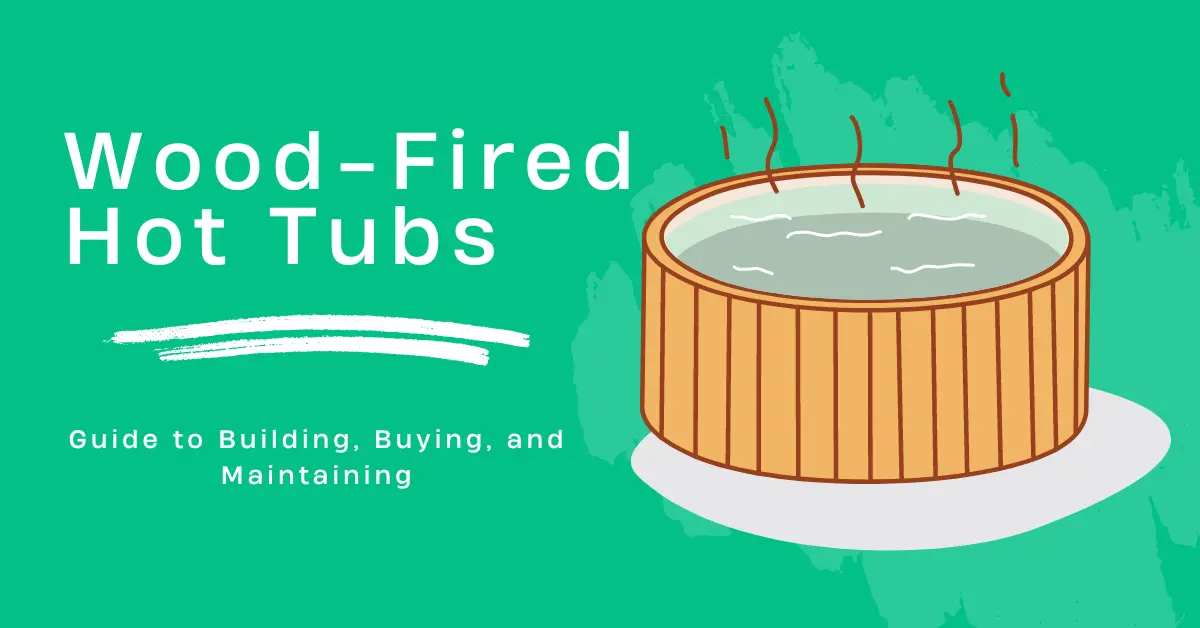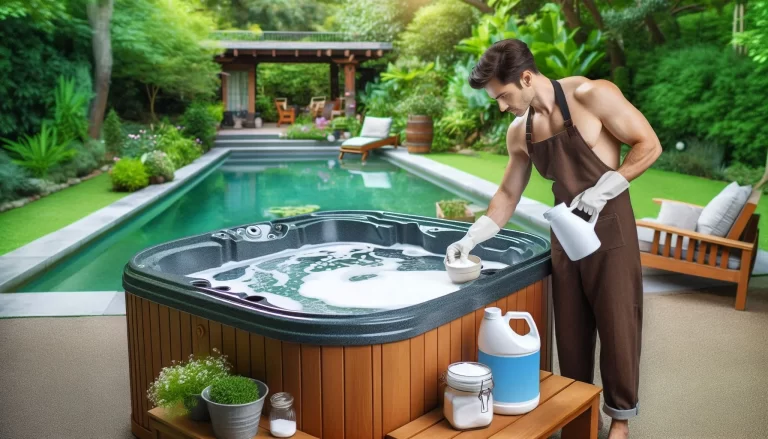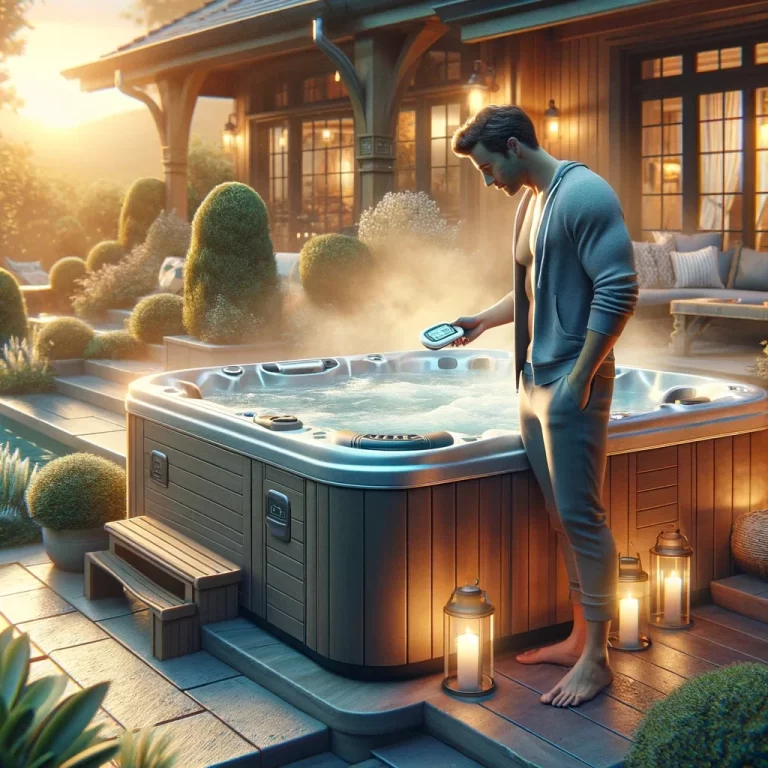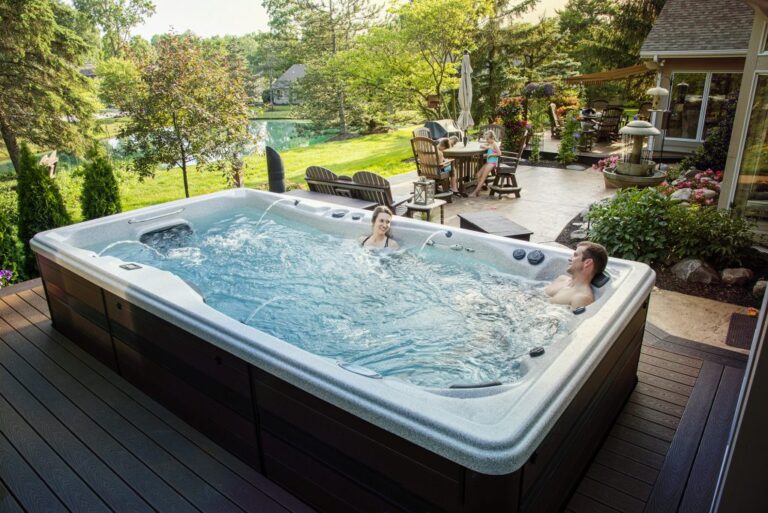Wood-Fired Hot Tubs: Guide to Building, Buying, and Maintaining
Dreaming of a cozy retreat with a wood-fired hot tub but are overwhelmed by the details? Whether you’re concerned about heating efficiency, installation challenges, or just finding the right materials, you’re not alone.
Many people face these same hurdles when diving into the world of wood-fired hot tubs. But don’t worry—this guide is here to simplify the process for you. From DIY projects and kits to expert tips on maintenance and care, we’ve got all the answers you need to turn that rustic dream into a relaxing reality.
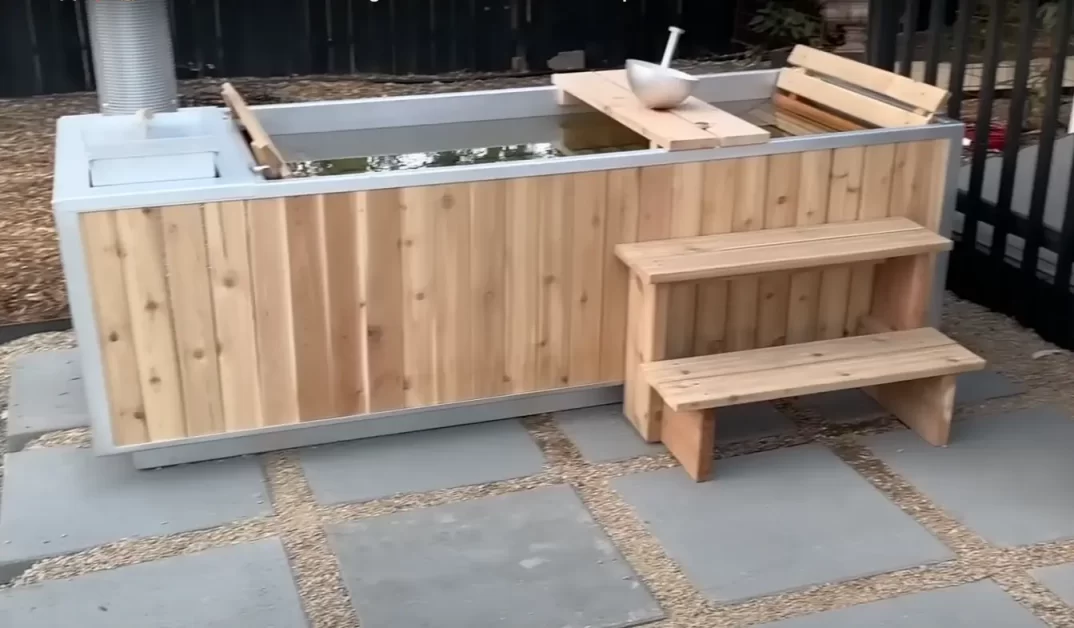
Types of Wood-Fired Hot Tubs
Before making a choice, each type offers its unique benefits, making it important to consider your specific needs and preferences.
1. Traditional Wooden Hot Tubs
These hot tubs are made from durable woods like cedar or redwood, which are prized for their classic rustic charm, natural aesthetics, and excellent insulation.
- Features: Round or oval shape, deep soaking depth, wooden benches, wood-fired heater.
- Benefits: Offers a natural, rustic look that blends well with outdoor environments. The wood’s natural insulating properties help maintain water temperature.
- Ideal For: Outdoor enthusiasts and those who prefer a natural, classic look. Perfect for cabins, woodland retreats, or a rustic backyard setting.
2. Portable Wood-Fired Hot Tubs
Crafted from lightweight materials, these hot tubs offer easier mobility and setup than traditional wooden tubs.
- Features: Lightweight construction, easy assembly, portable heater, sometimes inflatable.
- Benefits: Can be moved and set up in different locations, making them ideal for camping trips, temporary setups, or smaller spaces.
- Ideal For: Those who enjoy flexibility and might want to change the location of their hot tub. Great for weekend getaways or those with limited space.
3. Wood-Fired Stock Tank Hot Tubs
Repurposing large metal tanks from agriculture, these budget-friendly hot tubs are popular for their simplicity and industrial-chic look.
- Features: Galvanized metal construction, typically round or oval, wood-fired heater.
- Benefits: Affordable, durable, and easy to maintain. The metal construction makes them sturdy and long-lasting.
- Ideal For: DIY enthusiasts and those who prefer a minimalist or industrial design. Perfect for modern backyards or urban outdoor spaces.
4. Cedar Barrel Hot Tubs
It offers with durable barrel design, and stylish and low-maintenance options due to its tight seal.
- Features: Barrel design, tight wood seal, built-in benches, wood-fired heater.
- Benefits: The barrel shape creates a natural seal that reduces leaks and improves insulation. Cedarwood adds a pleasant aroma and enhances the overall experience.
- Ideal For: Those who want a durable, low-maintenance tub with a unique look. Ideal for both modern and traditional outdoor settings. Check out more about Cedar Hot Tub.
5. Japanese Ofuro Tubs
Japanese Ofuro tubs bring an element of cultural tradition to the wood-fired hot tub experience. These tubs are designed for deep soaking, often in a sitting position, and are smaller in size compared to typical Western hot tubs.
- Features: Deep, square, or rectangular shape, designed for sitting, wood-fired heater.
- Benefits: Provides a unique soaking experience with a focus on relaxation and meditation. The compact size makes it ideal for smaller spaces.
- Ideal For: Those who appreciate Japanese culture and want a hot tub that encourages a peaceful, meditative experience. Perfect for serene gardens or small patios.
6. Wood-Fired Hot Tub Boats
For the adventurous, wood-fired hot tub boats offer a unique combination of relaxation and exploration. These floating tubs allow you to enjoy a warm soak while drifting on a calm body of water.
- Features: Boat structure with built-in hot tub, wood-fired heater, and steering mechanism.
- Benefits: Combines the pleasure of a hot tub with the freedom to explore. Ideal for lakes, calm rivers, or large ponds.
- Ideal For: Adventurers and those who love being on the water. Great for lakefront properties or as a unique feature at a waterfront resort. Check and read about Wooden Spa.
How to Build a Wood-Fired Hot Tub
It can be a rewarding project that brings both relaxation and a sense of accomplishment. If you’re ready to roll up your sleeves and create a cozy retreat, this section will guide you through the entire process.
| Time | Complexity | Cost |
|---|---|---|
| 1-2 weeks | Medium | $1,500 – $3,000 |
Tools and Materials Required
You’ll need tools like saws, drills, and levels, as well as specific materials such as redwood or cedar, round wooden tubs, a burning stove, and a heating coil.
Step-by-Step Process
Step 1: Choose the Right Location
The first step in building your wood-fired hot tub is choosing the perfect spot. Ideally, you’ll want a level surface that’s close to a water source and has good drainage. Consider how the location will affect the heating process—areas exposed to wind may require more firewood to maintain the temperature.
If you’re setting up near a cabin in the woods or in your backyard, think about how the tub will blend with its surroundings, and make sure there’s enough space for the tub and any additional features like a wooden gazebo or wooden surround.
Step 2: Build the Base
Once you’ve chosen the location, it’s time to build the base. This foundation will support the weight of the tub and the water it holds. Start by cutting the platform from durable wood, like redwood or cedar. These types of wood are resistant to moisture, making them ideal for outdoor use.
After cutting the platform to size, level the ground and place the platform in position. You might also consider adding a burning stock tank underneath for additional stability and insulation.
Step 3: Construct the Tub
With the base ready, you can move on to constructing the tub itself. If you’re using a wood-fired hot tub kit, this part will be more straightforward, as the materials will be pre-cut and ready to assemble. If you’re doing a DIY build, measure and cut the wood for the tub’s walls, ensuring each piece fits together snugly.
A round wooden or wooden barrel tub design works well, as it distributes heat evenly and is easier to assemble. Use waterproof glue and screws to secure the pieces, then sand the edges to create a smooth finish.
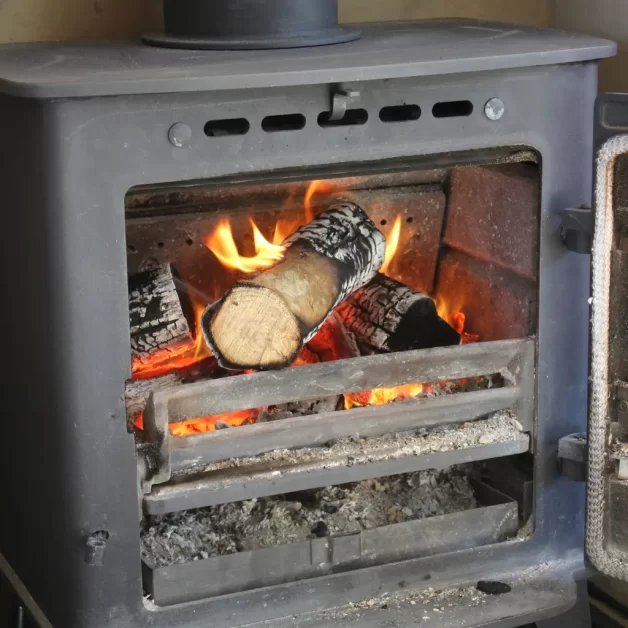
Step 4: Install the Heating System
The heart of your wood-fired hot tub is the heating system. There are several options to consider, including a wood-burning stove or a snorkel heater. For this step, you’ll need to install the heating coil or burning stove at a safe distance from the tub, ensuring that the heat is efficiently transferred to the water.
If you’re using a coil kit, position it so that the water circulates through the coil, heats up, and returns to the tub. Make sure all connections are secure and that the system is easy to access for adding firewood.
Step 5: Insulate the Tub
Insulating your wood-fired hot tub is essential for retaining heat and reducing the amount of firewood needed to keep the water warm. You can use foam boards or reflective insulation around the outside of the tub.
For a more natural look, cover the insulation with cedar cladding or similar material that complements the wood of the tub. This step is particularly important if you’re setting up in cooler climates or plan to use the tub in the winter.

Step 6: Add the Plumbing
Proper plumbing is crucial for filling, draining, and maintaining your wood-fired hot tub. Begin by installing a drain at the bottom of the tub to allow for easy water removal. Next, add piping that connects the heating coil to the tub, ensuring there are valves to control the flow of water.
You might also consider adding a filter system to keep the water clean, especially if you plan to use the tub frequently.
Step 7: Test and Seal the Tub
Before filling the tub with water, it’s important to test for leaks and ensure all connections are tight. Fill the tub partway and check for any drips or moisture around the seams. If you find any, seal them with a waterproof caulk or sealant.
Step 8: Finish with a Wooden Surround or Gazebo
To complete the look and enhance the functionality of your wood-fired hot tub, consider adding a wooden surround or wooden gazebo.
Step 9: Light the Fire and Enjoy
With everything in place, it’s time to light the fire and enjoy the fruits of your labor. Start by adding small, dry pieces of wood to the burning stove or snorkel heater, gradually increasing the size of the logs as the fire builds.
Portable Wood-Fired Hot Tubs
Portable wood-fired hot tubs offer a blend of convenience and rustic charm, making them a fantastic choice for those who want to enjoy the benefits of a hot tub without the commitment of a permanent installation.
Whether you’re looking for a relaxing soak at home or on the go, these tubs provide the perfect solution for anyone who values flexibility and natural warmth.
Advantages of Portable Wood-Fired Hot Tubs
- Mobility: Unlike permanent tubs, portable models can be moved around your property or taken with you on trips. This makes them ideal for people who enjoy outdoor activities or have a smaller living space.
- Easy Setup: These tubs are typically easier to set up and take down than traditional models. Most come with straightforward instructions, allowing you to have your tub ready for use in a short amount of time.
- Cost-Effective: Portable wood-fired hot tubs are often more affordable than their permanent counterparts, making them a great option if you’re on a budget but still want to enjoy the experience of a wood-fired soak.
- Versatility: Whether you’re placing it on your deck, in your backyard, or taking it to a remote location, portable tubs offer versatility that permanent installations can’t match.
Types of Portable Wood-Fired Hot Tubs
- Stock Tank Hot Tubs: Made from galvanized metal, stock tank hot tubs are durable, easy to maintain, and offer a rustic aesthetic. They’re also relatively lightweight, making them a great option for portability.
- Inflatable Wood-Fired Hot Tubs: Although not as common, inflatable models like the Saluspa Hollywood inflatable can be paired with a wood-fired heater to provide a similar experience to traditional tubs. These are the lightest and most portable options but require careful setup to ensure the heater works effectively.
- Cedar and Redwood Portable Tubs: For those who prefer a more natural look, cedar and redwood portable tubs offer a beautiful wood finish with the added benefit of being lightweight. These tubs often come in a round or barrel design, making them easy to transport and set up.
Setting Up Your Portable Wood-Fired Hot Tub
- Choose the Location: Pick a flat, stable surface that can support the weight of the tub when filled with water. Ensure there’s a safe area to place the burning stove or heater where it won’t be a fire hazard.
- Assemble the Tub: Follow the manufacturer’s instructions to assemble the tub. If you’re using a stock tank or wooden model, this might involve attaching a coil kit or heater.
- Prepare the Heater: Set up your wood-fired stove or heater, making sure it’s securely positioned and properly connected to the tub. Portable models often come with diy external heater options, which are easy to attach.
- Fill the Tub: Use a garden hose or water source to fill the tub. Depending on the model, this could take some time, so be patient.
- Light the Fire: Once the tub is filled, start your fire. Add wood to the stove or heater gradually, allowing the water to heat up evenly. Keep an eye on the temperature and adjust the fire as needed.
Maintenance and Care
Maintaining a portable wood-fired hot tub is similar to caring for a permanent one, but with a few added considerations:
- Water Treatment: Regularly check and treat the water to prevent the growth of bacteria. Portable tubs may not have built-in filtration systems, so manual treatment is essential.
- Cleaning: After each use, drain the tub and give it a thorough cleaning. This is especially important if you’re moving the tub to different locations, as leftover water can cause mold or mildew.
- Storage: When not in use, make sure to store your portable hot tub in a dry, sheltered area to protect it from the elements and prolong its lifespan.
What is a Wood-Fired Coil Kit?
A wood-fired coil kit is a practical and efficient way to heat your hot tub, offering both flexibility and performance. Whether you’re a DIY enthusiast looking to build your tub or simply want to upgrade an existing one, these kits provide a reliable solution for achieving the perfect soak.
With the right kit and proper installation, you’ll enjoy the warmth and relaxation of your wood-fired hot tub for years to come.
Types of Wood-Fired Coil Kits
- Standard Coil Kits: These are the most common type of coil kits, designed for general use in most wood-fired hot tubs. They typically include the coil itself, along with any necessary fittings and hoses. Standard kits are ideal for those who want a straightforward, reliable heating solution.
- High-Efficiency Coil Kits: For those looking to maximize heating efficiency, high-efficiency coil kits feature specially designed coils that increase the surface area for heat transfer. These kits can heat the water more quickly, reducing the amount of wood needed.
- Custom Coil Kits: If you have a unique hot tub setup or specific heating requirements, a custom coil kit might be the best option. These kits are tailored to fit your tub’s dimensions and heating needs, ensuring optimal performance.
How to Install a Wood-Fired Coil Kit
- Position the Stove: Start by setting up your wood-burning stove in a safe, stable location near the hot tub. Make sure it’s at a level lower than the tub to allow for proper water circulation.
- Connect the Coil: Attach the coil to the stove, ensuring all connections are secure. Depending on your kit, you may need to use pipe fittings or hose clamps to hold everything in place.
- Install the Water Inlet and Outlet: Next, connect the coil to the hot tub by installing the water inlet and outlet. The inlet should be positioned at the bottom of the tub, while the outlet should be placed higher up to allow for proper water flow.
- Test the System: Before lighting the fire, fill the tub with water and check the system for leaks. Ensure the water is flowing through the coil and returning to the tub without any issues.
- Fire It Up: Once everything is in place, light the fire in the stove and monitor the water temperature as it begins to rise. Adjust the fire as needed to reach your desired temperature.
Choosing the Right Coil Kit
- Material: Stainless steel and copper are the most common materials for coils. Stainless steel is durable and resistant to corrosion, while copper offers superior heat conductivity.
- Size: The size of the coil should match the size of your hot tub. Larger tubs may require a larger coil or multiple coils to heat the water efficiently.
- Compatibility: Ensure that the coil kit is compatible with your existing stove and hot tub setup. Some kits are designed for specific models, so double-check the specifications before purchasing.
Maintenance Tips
- Clean the Coil: Over time, soot and residue can build up on the coil, reducing its efficiency. Clean the coil regularly with a wire brush or specialized cleaner to maintain optimal performance.
- Check for Leaks: Periodically inspect the coil and connections for any signs of leaks. Tighten fittings or replace worn hoses as needed to prevent water loss.
- Monitor Water Flow: Ensure that the water is circulating through the coil properly. If you notice any issues, such as slow heating or uneven water temperature, it may be time to clean the coil or adjust the setup.
Buying Guide for Wood-Fired Hot Tubs
When selecting please keep in mind these points.
1. Determine Your Budget
Before you start shopping, establish a budget for your wood-fired hot tub. Prices can vary widely based on size, materials, and features. Having a clear budget in mind will help you narrow down your options and prevent overspending.
- Affordable Options: Stock tank hot tubs and DIY kits are often more budget-friendly.
- Mid-Range Options: Traditional wooden hot tubs and portable models fall into this category.
- High-End Options: Custom-designed tubs, Japanese Ofuro tubs, and boats can be more expensive.
2. Choose the Right Type
Consider which type of wood-fired hot tub best suits your needs. Think about factors such as size, location, and whether you want portability.
- Traditional Wooden Hot Tubs: Ideal for a permanent installation with a rustic look.
- Portable Hot Tubs: Perfect for those who need flexibility and ease of setup.
- Stock Tank Hot Tubs: A cost-effective and durable choice for a more industrial aesthetic.
- Cedar Barrel Hot Tubs: Offers a unique, low-maintenance option with a traditional feel.
- Japanese Ofuro Tubs: Best for deep soaking and a cultural experience.
- Hot Tub Boats: Great for adventurous types who enjoy both relaxation and exploration.
3. Consider Size and Capacity
The size of your hot tub will determine how many people can use it comfortably and how much space it will take up. Measure the area where you plan to place the hot tub to ensure a good fit.
- Small Tubs: Suitable for 2-4 people, ideal for small spaces.
- Medium Tubs: Accommodates 4-6 people, a good choice for family or social gatherings.
- Large Tubs: Fits 6+ people, perfect for entertaining or larger families.
4. Evaluate Materials and Construction
The materials used in the construction of your hot tub affect its durability, appearance, and maintenance needs.
- Wood Types: Cedar and redwood are popular for their natural resistance to decay and pleasant aroma.
- Metal Options: Galvanized steel or aluminum is often used for stock tank hot tubs, offering durability and ease of maintenance.
- Insulation: Proper insulation helps maintain water temperature and reduces heating time.
5. Assess Heating Options
The effectiveness of the heating system is crucial for a wood-fired hot tub. Look for a heater or coil kit that suits your tub size and desired heating efficiency.
- Coil Kits: Ensure compatibility with your hot tub and wood stove. High-efficiency kits can heat the water faster.
- Stove Quality: Choose a reliable, well-constructed wood stove that provides consistent heat and is easy to use.
6. Check for Additional Features
Some hot tubs come with extra features that can enhance your experience. Consider what additional features might be important for you.
- Cover: A sturdy cover helps retain heat and keeps debris out of the water.
- Seats and Benches: Built-in seating can increase comfort and usability.
- Water Treatment Systems: Built-in filtration or cleaning systems can simplify maintenance.
7. Read Reviews and Ratings
Research customer reviews and ratings to gain insight into the performance and reliability of different models and brands. Pay attention to feedback on durability, ease of use, and customer service.
8. Verify Warranty and Support
Ensure the hot tub comes with a warranty that covers defects and issues. Check what is included in the warranty and the length of coverage. Good customer support can also be crucial for addressing any concerns or problems that arise after purchase.
9. Plan for Installation and Maintenance
Consider how you will install and maintain your hot tub. Some models may require professional installation, while others are designed for DIY assembly. Regular maintenance is key to extending the life of your hot tub, so plan for ongoing care and upkeep.

Maintenance and Care
By following these guidelines, you’ll ensure your hot tub remains clean, functional, and enjoyable for years to come.
Regular Cleaning:
- Interior: Clean every few weeks using a non-abrasive cleaner and soft cloth. Rinse thoroughly.
- Heater and Coil: Clean monthly to remove soot and ash.
- Water: Test weekly for pH and chlorine levels and adjust as needed.
Inspect and Maintain:
- Leaks: Check connections and the tub for leaks regularly. Fix or replace parts as necessary.
- Wood: Inspect for cracks or damage and sand and reseal if needed.
- Heater: Ensure the stove and coil kit are in good working order and replace any damaged parts.
Seasonal Care:
- Winter: Use a thermal cover to protect the tub from freezing temperatures and ice damage.
- Summer: Monitor water temperature to prevent overheating and use algaecide to prevent algae growth.
Troubleshooting Common Issues:
- Slow Heating: Check the coil and stove for blockages or inefficiencies.
- Leaks: Tighten fittings and replace seals as needed.
- Odors: Clean the tub and check the water chemistry.
- Wood Damage: Sand, seal, and treat any rotting wood.
Professional Maintenance:
- For major issues or complex maintenance, consider professional help.
Wood-Fired Hot Tub Accessories
Transforming your hot tub experience into a cozy oasis can be achieved with the right accessories.
1. Covers and Insulation
Thermal Covers:
- Purpose: Helps retain heat and reduces heat loss when the tub is not in use.
- Features: Usually made from thick, insulated material that fits snugly over the tub.
- Benefits: Keeps water warm longer, saves on heating time and fuel.
Insulating Blankets:
- Purpose: Provides additional insulation around the tub, especially in colder climates.
- Features: Typically made from foam or other insulating materials.
- Benefits: Enhances heat retention and can prevent freezing in winter.
2. Seating and Comfort
Built-In Benches:
- Purpose: Offers comfortable seating within the tub.
- Features: Often made from the same wood as the tub or other water-resistant materials.
- Benefits: Enhances relaxation by providing a comfortable place to sit and soak.
Cushions and Headrests:
- Purpose: Adds extra comfort for lounging in the hot tub.
- Features: Waterproof and easy to attach.
- Benefits: Provides additional support and comfort, especially for extended soaks.
3. Water Treatment and Maintenance
Water Filters:
- Purpose: Keep the water clean by trapping debris and particles.
- Features: Usually removable and replaceable.
- Benefits: Reduces the need for frequent cleaning and helps maintain water quality.
Cleaning Tools:
- Purpose: Makes cleaning the tub easier and more effective.
- Features: Includes brushes, squeegees, and sponges designed for use with wood.
- Benefits: Helps maintain a clean and hygienic hot tub with minimal effort.
4. Heating and Temperature Control
Temperature Gauges:
- Purpose: Monitors the water temperature to ensure it stays within a comfortable range.
- Features: Can be analog or digital.
- Benefits: Helps prevent overheating and ensures a comfortable soak.
Heater Enhancements:
- Purpose: Improves the efficiency of the wood-fired heater.
- Features: Includes items like heat shields or additional insulation for the stove.
- Benefits: Increases heating efficiency and reduces fuel consumption.
5. Decorative and Functional Additions
Decking and Surrounds:
- Purpose: Provides a stylish and functional area around the hot tub.
- Features: These can be made from wood, composite materials, or other weather-resistant options.
- Benefits: Enhances the look of your hot tub area and provides a safe, comfortable space around the tub.
LED Lighting:
- Purpose: Adds ambiance and safety to your hot tub area.
- Features: Waterproof, often solar-powered or low-voltage.
- Benefits: Creates a relaxing atmosphere and improves visibility at night.
Steps and Ladders:
- Purpose: Provide safe and easy access to the hot tub.
- Features: Typically made from wood or metal, with slip-resistant surfaces.
- Benefits: Enhances safety and convenience when getting in and out of the tub.
Storage Solutions:
- Purpose: Keep your hot tub accessories organized and within reach.
- Features: Includes shelves, cabinets, or racks designed for outdoor use.
- Benefits: Reduces clutter and makes it easier to keep your hot tub area tidy.
Ready to find the perfect wood-fired hot tub for your outdoor oasis? Explore our selection and get expert advice at Hot Tub Patio.
What features are most important to you in a hot tub? Let us know how we can help you create your ideal relaxation retreat!







